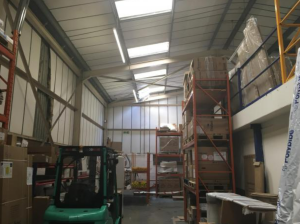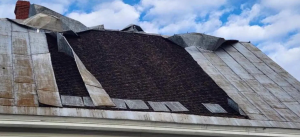
When a flood strikes, it can leave behind a trail of destruction, causing immense damage to homes and properties. As a homeowner, it’s essential to understand the process of flood damage restoration to minimize losses and restore your property to its pre-flood condition. In this blog post, we will delve into the intricacies of flood damage restoration and the steps involved in professionally restoring your home after a devastating flood.
Flood damage can wreak havoc on various aspects of your property, including the structure, furniture, appliances, and personal belongings. The extent of the damage largely depends on the severity and duration of the flood. Water intrusion can lead to mold growth, weaken the foundation, compromise electrical systems, and damage vital structural components.
The first step in flood damage restoration is a comprehensive assessment and inspection of the affected area. Trained professionals will evaluate the extent of the damage, categorize it according to industry standards, and determine the best course of action. This assessment includes identifying areas of water penetration, assessing structural integrity, and evaluating potential health hazards such as mold growth.
Once the assessment is complete, the next crucial step is water extraction. Industrial-grade pumps and specialized equipment are used to remove standing water from your property. Speed is of the essence during this stage, as prompt water removal helps prevent further damage and reduces the risk of mold growth. Professionals will also employ moisture detection tools to ensure all excess moisture is eliminated.
After water extraction, the drying and dehumidification process begins. Professionals utilize powerful air movers and dehumidifiers to eliminate moisture from the affected areas. This step is vital in preventing secondary damage caused by lingering humidity. Thoroughly drying the property also minimizes the risk of mold and mildew growth.
Once the property is dry, thorough cleaning and sanitization are necessary to restore a safe and healthy living environment. Professionals use specialized cleaning agents to remove contaminants, debris, and potential biohazards. Every surface, including walls, floors, furniture, and personal belongings, undergoes meticulous cleaning and disinfection.
Flood damage often compromises the structural integrity of a property. After the initial cleaning and sanitization, professionals assess and address any structural damage. This may include repairing or replacing damaged drywall, flooring, insulation, and electrical systems. Structural repairs ensure the safety and stability of your home for the long term.
Floods can severely damage personal belongings and cherished possessions. Experienced restoration professionals employ advanced techniques to salvage and restore as many items as possible. From furniture to electronics, photographs to important documents, content restoration aims to recover and revitalize your valued possessions.
One of the most significant concerns after a flood is mold growth. Moisture and damp conditions provide an ideal environment for mold spores to thrive. Professional flood damage restoration services include thorough mold remediation to eliminate existing mold and prevent future growth. This process involves identification, containment, removal, and proper disposal of affected materials.
Once all the necessary restoration and repairs are complete, a final inspection is conducted to ensure that your property has been restored to its pre-flood condition. Professionals will verify that all structural elements are secure, surfaces are clean, and the property is safe for occupancy. This final step provides you with peace of mind and reassurance that your home is once again a safe haven.
Experiencing a flood can be a devastating event, but with the help of professional flood damage restoration services, you can restore your property and move forward. Understanding the process and the steps involved is essential to navigate the restoration journey successfully. By entrusting the restoration to experienced professionals, you can minimize losses, ensure the safety of your home, and regain a sense of normalcy after the disaster. Remember, swift action is key in mitigating flood damage and restoring your property to its former glory.
Roofs are an important part of construction. They protect structures against the weather. Custom residential roofing options are diverse, ranging from the traditional asphalt shingles and eco-friendly options to more modern choices such as metal. If you like or are interested in what we offer the solutions to your problem and in a professional way we will help you if you want to investigate further, go here Reliable roof repair company For a roof to last, it is important that the installation and maintenance be done correctly. Smart roofing solutions have been developed thanks to technological advancements, and sustainability has become a priority in the roofing industry. It is important to stay informed on these trends in order to make informed decisions when it comes time for construction or property management.





